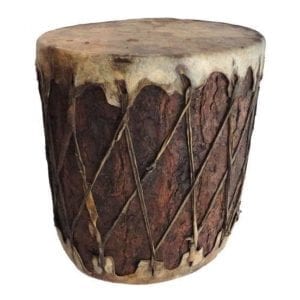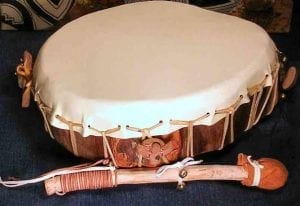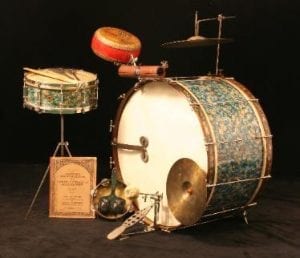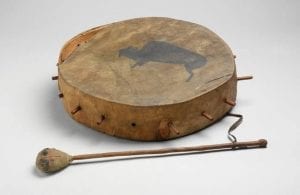The drum is the heart of music. The saxophone can play and then rest, as can all of them except the drums; the drummer keeps going, he can’t afford to stop.
– Jo Jones.
Drumming is a great way to express emotions in a musical form. Over the years drumming has changed a lot, from using just a log to using a full drum set full of different types. Many forms have come into style over the years from jazz drumming to metal-core drumming. Drumming has changed over the years from its equipment to the styles people now use.

The concept of drums is as old as mankind. A drum is called a membranophone, or an instrument that creates sound by striking a stretched membrane with some type of object, usually a rounded stick. Drums consist of a hollowed-out piece(called the body), a membrane stretched over the end of the drum, and tuning keys or pegs which tighten or loosen the membrane to achieve different tones. While most may think that the body of the drum produces the sound, it is in fact actually the membrane and its vibration that creates the sound when struck.

Drums first appeared as far back as 6000 BC. Mesopotamian excavations unearthed small cylindrical drums dated 3000 BC. Several wall markings found in caves in Peru show drums used in various aspects of societal life. The American Indians used gourd and wooden constructed drums for their rituals and ceremonies. Drums have always been used for more than merely creating music. Civil uses, messaging, and religious uses are but a few.

Dating back to the slave trade the drum has been used all over the world as a means of communication and self-expression. Its broad variety of users includes the early African tribes and the Native Alaskan tribes, both using them for ceremonial purposes. The Africans brought drums with them to the Americas and helped to develop their popularity among American musicians. In the mid-1900s drum sets were brought about. These revolutionary collaborations of percussive pieces started off with a pair of hi-hats, a bass and snare drum, and a couple of tom-toms.

Drums can be made from wood, metal and various synthetic materials such as fibreglass and acrylic in a variety of sizes and weights. Each material and size comes with its own sonic properties. The sound of a drum can also be influenced by the thickness and material of the head. Tightening the head (i.e. increasing the tension) will produce a higher pitch. Tom-toms with heads on the underside can be tuned to create an even wider variety of sounds and tones. Other determining factors in the sound of its drum are the thickness, length, and diameter of the shell.
Want to try this majestic instrument out?
Well, InstruRentals has just the drumkit for you.
